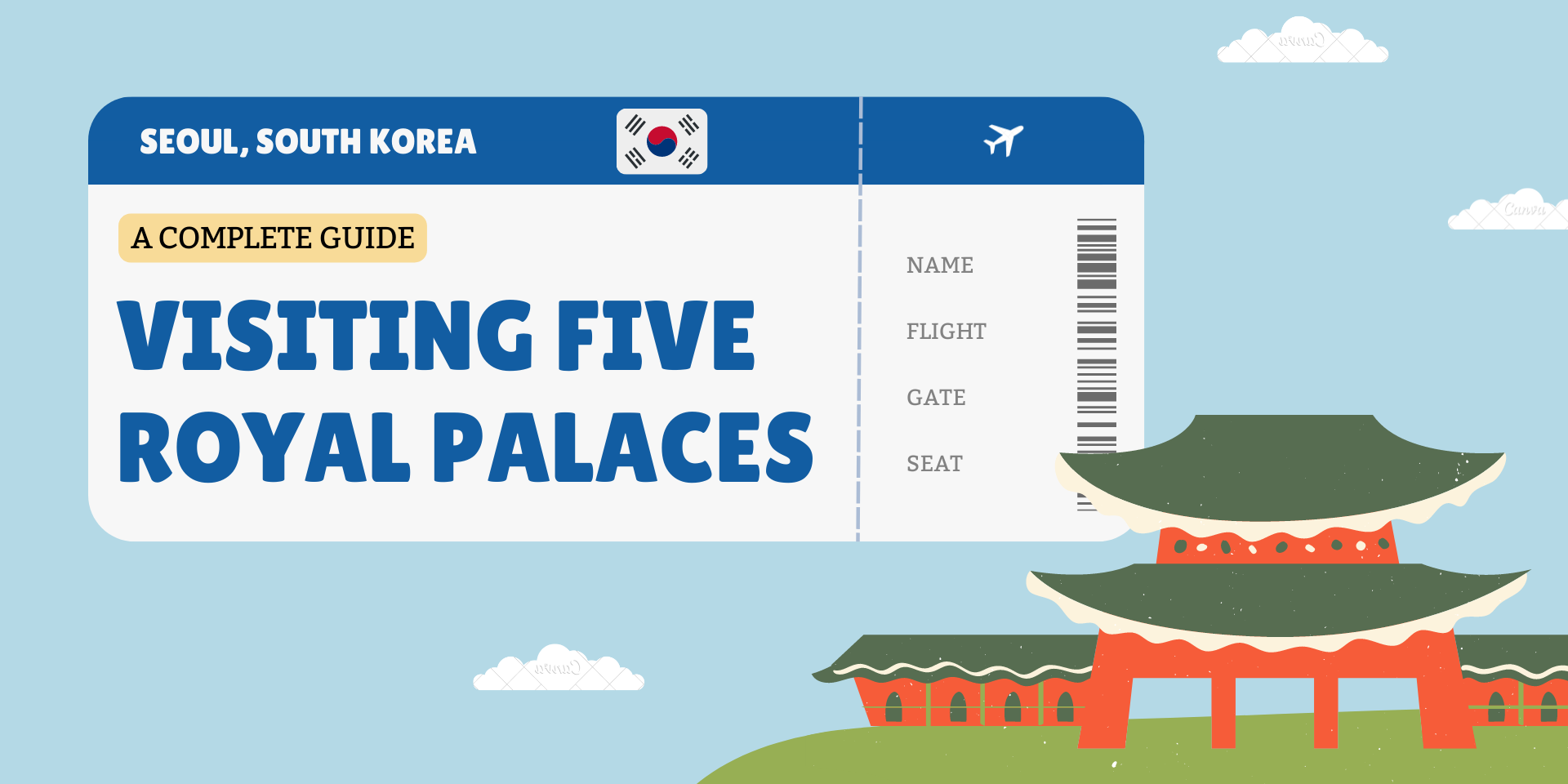Seoul is home to the Five Royal Palaces: Gyeongbokgung Palace, Changdeokgung Palace, Changgyeonggung Palace, Deoksugung Palace, and Gyeonghuigung Palace.
-
Gyeongbokgung Palace
Arguably the prettiest and remains the largest of all five palaces. The founder of the Joseon dynasty, Yi Seong-gye, moved the capital to Hanyang (the former name of Seoul) and built Gyeongbokgung, the dynasty’s first palace. Completed in 1395, Gyeongbokgung was the first royal palace where the king not only resided but also ruled the country. Built according to the feng shui principles of the time, the chosen site was surrounded by the Bugaksan, Namsan, Inwangsan, and Naksan mountains. As a royal palace, its architecture represents the best of its time. Gyeongbokgung Palace has many cultural assets: its stone walls, roofs, and Haetae statues reflect the architectural advancement of the Joseon dynasty. The Gyeonghoeru Pavilion and the Hyangwonjeong Basin are considered the finest examples of their kind in Korea.
-
Changdeokgung Palace
The principal palace for kings of the Joseon dynasty and is the most well-preserved of the five remaining royal Joseon palaces. It is the second royal residence built after Gyeongbokgung Palace in 1405. Changdeokgung Garden was built during the Taejong reign as a resting place for members of the royal family.
The palace grounds comprise a public area, a residence for the royal family, and this garden. The palace served as the main building after the reign of King Seongjong, while many kings used it as a dwelling house. However, it was burnt down during the Japanese invasion in 1592. They then restored the place in 1611, and now nature and art abound, making it a must-see for tourists.
The palace offers many cultural assets including the Injeongjeon, Daejojeon, Seonjeongjeon Pavilions, and Nakseonjae. In December 1997, the UNESCO World Heritage Committee in Italy designated Changdeokgung Palace as a World Heritage Site. It represents the beauty of Korea.
-
Changgyeonggung Palace
Originally built by King Sejong for his retiring father, King Taejong, it is one of the special palaces of the Joseon Dynasty. All Joseon Dynasty palaces had ponds with an arched bridge over them, just like the Okcheongyo Bridge. After crossing it, if you pass Myeongjeongmun Gate, you’ll find Myeongjeongjeon. This is the king’s office, and Myeongjeongjeon is the oldest of the Joseon Dynasty palaces.
The houses face south, but Myeongjeongjeon faces east because the shrines of the ancient kings are in the south, so it could not respect Confucian custom. In the courtyard, they built stones with statues of carved officials. They built Tongmyeongjeon for the queen and it is the largest building in Changgyeonggung Palace. You can recognize its delicacy thanks to its structural details in the various parts of the building.
During the Japanese occupation, they developed Changgyeonggung into a recreation resort with a zoo and botanical gardens. Later, they moved the zoo and in 1983, Korea’s government completely restored and renamed the palace to its actual name.
-
Deoksugung Palace
Located at the corner of Seoul’s busiest downtown intersection and is famous for its elegant stone-wall road. Mainly built at the term of the 20th century, Deoksugung Palace is the smallest of Seoul’s palaces. The name Deoksugung Palace means “Palace of Virtue and Longevity” to wish for a long life for Emperor Gojong.
Located at the corner of Seoul’s busiest downtown intersection, Deoksugung Palace is famous for its elegant stone-wall road. It is also the only palace that sits alongside a series of Western-style buildings that add to the uniqueness of the surrounding scenery.
Deoksugung Palace is virtually two palaces in one: a Korean traditional complex with examples of late-Joseon palace architecture and a Western-style palace complex with two neoclassical structures.
-
Gyeonghuigung Palace
Served as the secondary palace for the king, it was where the king moved to in times of emergency. In the late Joseon period, Gyeonghuigung served as a secondary palace for the king. “Seogwol” is located in the western part of Seoul.
It was the palace to which the king moved in case of emergency. Built using the sloping geography around the mountain, it has a traditional architectural beauty and great historical significance. In all, the palace comprised 100 buildings.
In 1908, Japan invaded Korea and the Japanese Gyeongseong School moved into the palace hence they relocated much of the palace. Near Gyeonghuigung Palace are the Seoul History Museum, Jeongdong Street, and the busy Jongno Street.

